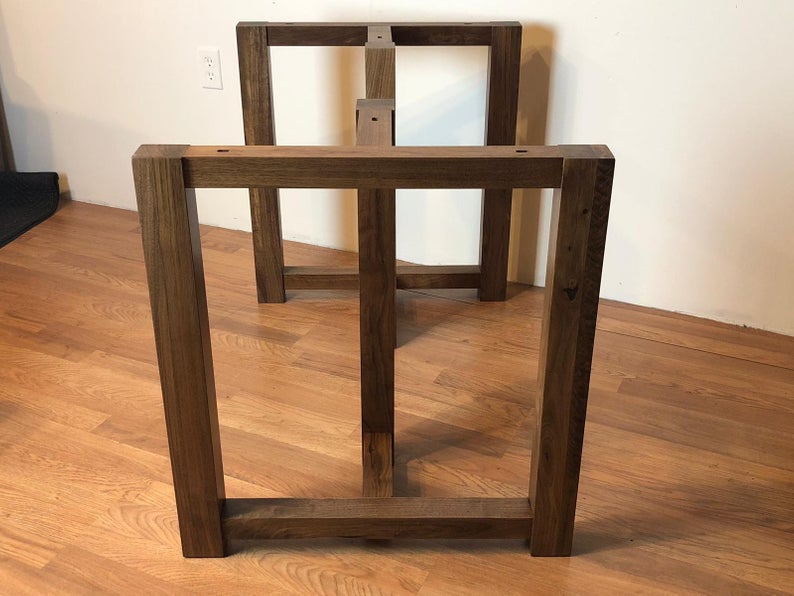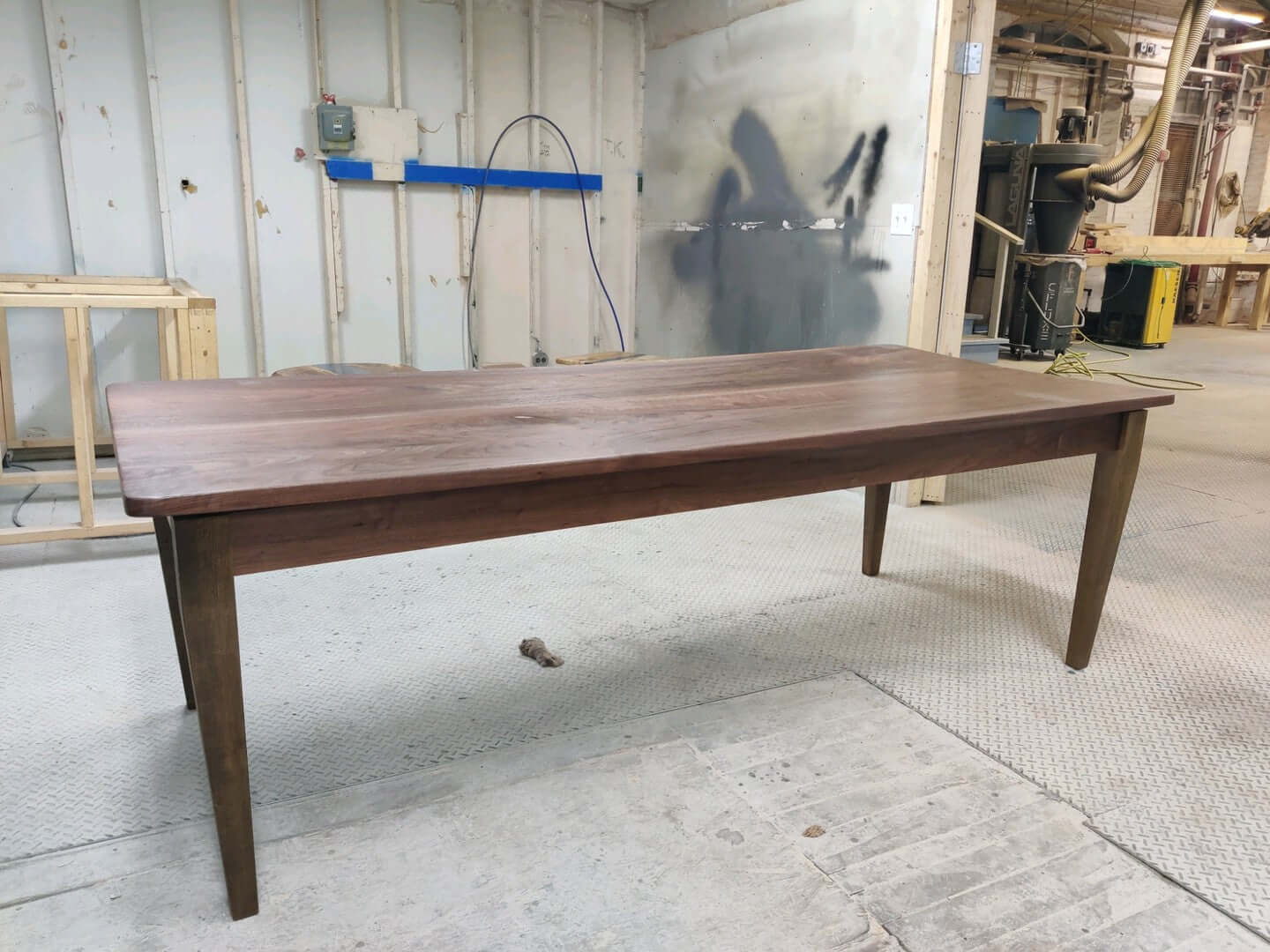Essential Factors To Consider for Picking the Right Table Legs Wood
Choosing the ideal timber for eating table legs entails a nuanced understanding of different factors that affect both capability and visual allure. The choice of wood kind, ranging from durable woods to much more delicate softwoods, plays a pivotal role in ensuring durability and stability. Each of these components can considerably affect the total experience of your eating area.
Value of Timber Type

Hardwoods, such as oak, maple, and walnut, are frequently preferred for their strength and resistance to wear. These sorts of wood provide a robust structure that can stand up to daily use, making them optimal for dining tables that experience frequent events. On the other hand, softer timbers like ache may be a lot more vulnerable to scrapes and dents, which might not be suitable for high-traffic locations.
Additionally, the choice of wood can also impact the convenience of upkeep. Some timbers need routine oiling or sealing to preserve their appearance, while others may be extra flexible. Eventually, picking the proper wood type includes balancing visual factors to consider with functional demands, making certain that the eating table legs not only look appealing however likewise stand the examination of time.
Examining Security and Toughness
When evaluating table legs, one must consider the stability and toughness they offer to the overall structure. The legs are vital in sustaining the table top and making certain the dining experience is safe and enjoyable. A secure table is essential for avoiding wobbling or tipping, which can bring about spills or mishaps throughout dishes.
The selection of timber kind considerably impacts strength. Hardwoods such as oak, maple, and walnut are usually more durable and sturdy than softwoods like yearn or fir. In addition, the density and layout of the legs play an essential duty; thicker legs or those with a tapered layout can supply better support and stability.

Aesthetic Considerations
While functionality is critical, the aesthetic charm of table legs can not be forgotten, as they substantially influence the general design and setting of the eating room. The option of timber, coating, and design can enhance or take away from the table's aesthetic influence.

Coatings also play a vital function in looks. A natural finish can highlight the timber's innate beauty, while painted or stained legs can present shade and personality into the area. The percentage and scale of the legs family member to the tabletop and bordering furnishings should be considered to ensure visual equilibrium and communication.
Ultimately, the eating table legs should Visit Your URL not only serve a practical function however also add to a cohesive and welcoming ambience, making them a crucial factor to consider in the general layout of the eating location.
Upkeep Requirements
To ensure long life and protect the charm of wooden table legs, normal maintenance is essential (Dining Table Legs Wood). Wood is a natural material that can be at risk to harm from wetness, heat, and use. Developing a routine care plan will dramatically enhance the longevity of your dining table legs.
Begin with normal dusting making use of a soft, lint-free fabric to get rid of dirt and debris that can damage the surface area. For more detailed cleansing, utilize a light soap solution and damp fabric, preventing excess moisture that can leak right into the timber. It is a good idea to apply a premium timber gloss or conditioner every couple of months to nourish the timber and keep its radiance.
Furthermore, consider the setting where the table is placed. Prevent direct sunlight, as it can create fading, and use rollercoasters or placemats to safeguard the surface area from heat and moisture. Deal with any kind of scratches or damages without delay with ideal timber filler or touch-up pens to stop further damage. By sticking to these maintenance requirements, you will certainly not only preserve the visual charm of your wood eating table legs however likewise prolong their practical life-span.
Budget and Price Factors
Budget plan and cost factors frequently play an important role in the decision-making procedure for choosing wooden table legs. When examining alternatives, it is crucial to develop a clear budget that aligns with your general furniture investment. The price of wood table legs can differ dramatically based upon the kind of workmanship, wood, and design intricacy.
Hardwoods such as oak, walnut, and cherry generally command greater prices because of their durability and visual charm. In contrast, softer woods like ache may be a lot more cost effective however may not offer the same long life. In addition, custom or artisan-crafted legs can incur extra costs, showing the ability and time invested in their production.
It is additionally essential to take into consideration the possible long-lasting worth of your investment. While selecting lower-cost materials could seem monetarily sensible initially, they might call for even more frequent Get More Info substitute or repair work, inevitably enhancing total expense.
Therefore, stabilizing quality and expense is crucial. Prioritize products that satisfy your visual preferences while guaranteeing they fit comfortably within your budget plan, permitting you to create a dining location that is both visually attractive and useful.
Conclusion
In verdict, picking the ideal timber for eating table legs demands mindful factor to consider of numerous aspects, consisting of wood type, stability, visual appeals, maintenance, and budget. Ultimately, a well-informed choice will certainly improve the durability and visual appeal of the eating table, making certain fulfillment and functionality for years to come.
Picking the ideal kind of timber for eating table legs is crucial for both visual charm and structural integrity. Ultimately, picking the proper wood type involves stabilizing visual considerations with practical needs, making certain that the eating table legs not only look enticing however also stand the examination of time.
It is a good idea to apply a top quality timber gloss or conditioner every few months to nurture the wood and keep its website link appeal.
The cost of wood dining table legs can differ substantially based on the type of timber, craftsmanship, and layout complexity.
In conclusion, choosing the appropriate timber for dining table legs necessitates mindful consideration of different factors, consisting of timber type, security, aesthetic appeals, maintenance, and budget.